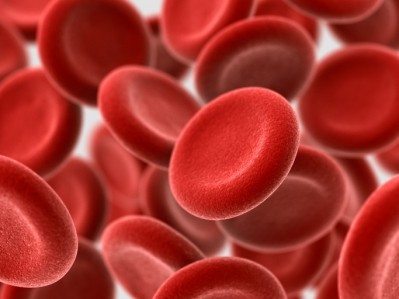Study of 29,000 blood samples finds higher omega-3 levels associated with lower marker of inflammation

The new research, published in the journal Prostaglandins, Leukotrienes and Essential Fatty Acids, revisits data collected years ago for an earlier study. The data arose from blood testing done in 2011 and 2012 at a now defunct laboratory as part of routine clinical assessments.
Large data set
The study assessed data from more than 44,000 blood samples. The samples were stratified via their Omega-3 Index, a measurement pioneered by one of authors, William Harris, PhD. Harris, who founded the testing firm OmegaQuant Analytics, is now the head of the Fatty Acid Research Institute. His coauthors, Michael McBurney, PhD, and Nathan Tintle, PhD, are also members of the institute as well has having other academic affiliations, as does Harris.
The authors discarded the top 0.5% and the lowest 0.5% Omega-3 Index samples (about 450 samples in total) as outliers. They also excluded those which showed high levels of CRP (C reactive protein), a measure of acute inflammation associated with a disease state. That got rid of approximately 15,000 more samples.
That left 28,871 blood samples for the final analysis, in which the authors looked at the interplay of Omega-3 Index values and the various ratios of neutrophils to lymphocytes (NLR) found in the samples.
Balancing the immune system players
Neutrophils are constituents of the innate immune system, which also includes phagocytes, dendritic cells, macrophages, eosinophils, basophils, mast cells, and natural killer cells. This is the standing army, so to speak, of the immune system. Neutrophils are the most numerous soldiers in that army.
Lymphocytes, i.e., T and B cells, are part of the specialists recruited for each new mission. They are part of the body’s system of adaptive or acquired immunity by which antibodies are produced and deployed. Lymphocytes maintain the immunological memory so more antibodies coded to a previously experienced infection can quickly be produced.
This ratio is calculated by divided the number of neutrophils by the number of lymphocytes. A lower ratio, closer to 1, is generally associated with lower inflammation. A higher ratio is associated with a wide variety of disease states, including cardiovascular disease and events, the severity of Covid-19, mood disorders, cognitive impairment, dry eye, total mortality and others.
The researchers found a distinct, inverse relationship between the Omega-3 Index and the NLR values observed in the samples.
“Red blood cell EPA+DHA levels are significantly and inversely associated with NLR, a biomarker of inflammation and innate-adaptive immune system balance. Based on our observations in this healthy cohort, an O3I > 6.6%, and possibly as high as 8.5%, is associated with lower NLR values that are indicative of a quiescent, balanced innate-adaptive immune system,” they concluded.
Emergence of NLR as a marker planted seed of study
Harris said the idea for the paper came to him as he read more about the implications of NLR.
“I had seen multiple papers where this ratio was predictive of risk for all kinds of diseases. Because we know that omega-3s are anti inflammatory, I wondered if there was a relationship between the Omega-3 Index and this new metric (NLR). This is not something that we had been looking at in the omega-3 realm before,” he said.
Harris said the result could shed further light on just how omega-3s work to help lessen the risk of things like cardiac events. EPA and DHA give rise to a host of beneficial metabolites such as prostaglandins, leukotrienes, lipoxins and specialized pro-resolving lipid mediators (SPMs, e.g., resolvins, protectins, and maresins) that seem to be working in this context to keep the immune system in a balanced state.
“It was a pretty simple question. The nice thing about this study is we were able to show this effect in essentially healthy people,” Harris said.
Source: Prostaglandins, Leukotrienes and Essential Fatty Acids
Volume 177, February 2022, 102397
The Omega-3 Index is Inversely Associated with the Neutrophil-Lymphocyte Ratio in Adults
Authors: Michael I. McBurney, Nathan L. Tintle, William S. Harris








